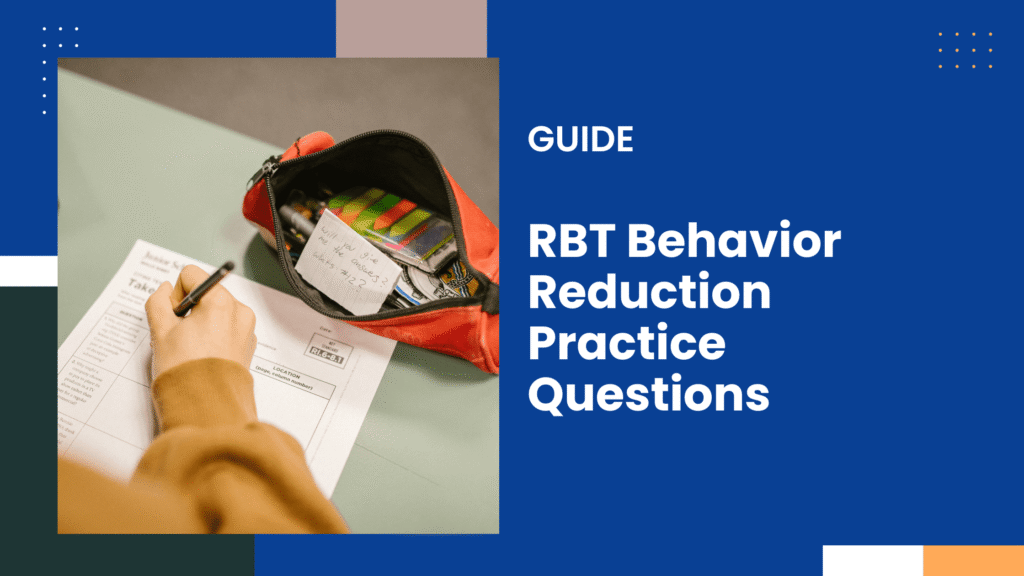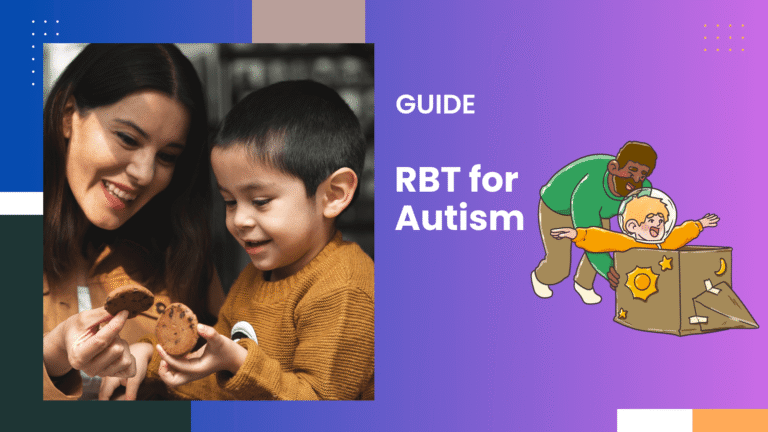RBT Behavior Reduction Practice 15 Questions For 2025 Mock

RBT Behavior Reduction ABA Practice Questions covering extinction, punishment, reinforcement, and antecedent strategies. Prepare for the exam with realistic, original questions and answers designed to boost your score fast.
Download the PDF File of the Quiz
ABA Behavior Reduction RBT Exam
Behavior reduction is a vital part of applied behavior analysis (ABA). If you want to be a Registered Behavior Technician (RBT), you need to work to decrease challenging behaviors.
Your goal is to promote positive behavior in individuals by addressing unwanted actions.
Key concepts include:
- Target Behaviors: Specific actions you want to reduce.
- Maladaptive Behaviors: These are behaviors that interfere with learning or functioning.
- Behavior Functions: You also need to understand why a behavior occurs to help you choose appropriate interventions.
Steps to behavior reduction:
- Operational Definition: Clearly define the target behaviors in measurable terms.
- Data Collection: Track the frequency or intensity of these behaviors.
- Behavior Reduction Goals: Establish SMART goals (Specific, Measurable, Achievable, Relevant, Time-bound) for behavior change.
Personally, during your RBT exam, i expect questions related to these strategies and concepts.
So, I want you to familiarize yourself with the BACB task list, especially Unit D, and prepare well.
By the way, remember, behavior reduction isn’t just about stopping unwanted actions; it’s about teaching new, functional behaviors.
Behaviour Assessment and Intervention Strategies
Functional Behavior Assessment (FBA)
A Functional Behavior Assessment (FBA) collects data to analyze how and why a behavior happens.
Observations can reveal patterns based on antecedents (what happens before a behavior) and consequences (what happens after).
So, my advice would be to use operational definitions to describe behaviors clearly and know that the purpose of a behavior allows you to determine the best strategies for intervention.
An FBA sets the stage for all future steps in behavior reduction planning.
Behavior Intervention Plan (BIP) Development
Now, onto the next. Once you complete the FBA, you can develop a Behavior Intervention Plan (BIP).
This plan outlines strategies to reduce negative behaviors while teaching positive ones.
Your BIP should include:
- Target behaviors: Clearly defined behaviors to reduce.
- Replacement behaviors: Positive actions that serve the same purpose as negative behaviors.
- Intervention strategies: Specific methods you will use, such as differential reinforcement techniques.
Antecedent Modifications and Preventative Strategies
Antecedent modifications change the environment to reduce the likelihood of challenging behaviors. By adjusting triggers, you can often prevent issues before they arise.
You need to use non-contingent reinforcement—providing rewards without conditions—can help meet needs and decrease problem behaviors.
- Renewal Quiz
- RBT Initial Competency Assessment
- RBT Measurement Quiz
- Documentation/ Reporting
- Professional Conduct







